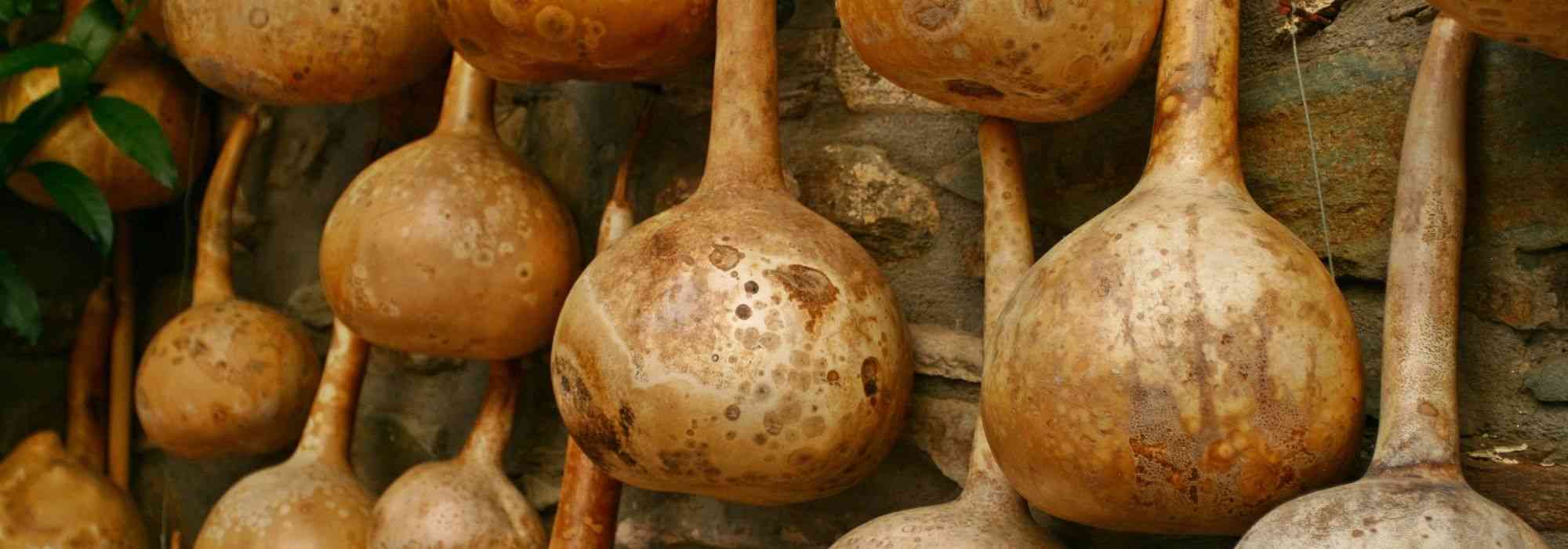
How to dry gourds?
Harvest, emptying, drying, cleaning and maintenance
Contents
Belonging to the gourd family, the bottle gourd, which has a very bitter taste, is used more for decorative purposes than culinary ones. It can beautifully adorn a trellis, with its heart-shaped and undulating leaves measuring 15 to 25 cm in diameter, its stems that can reach up to ten metres long, and its very fragrant white cup-shaped flowers that open in the evening.
But its fruit can also serve as a completely waterproof container, similar to how the Guarani people, who live in the heart of the Amazon rainforest, use it. Once fully grown, the bottle gourd is harvested, hollowed out, and dried to become a flask and/or for drinking mate (an infusion of a plant called “Yerba mate”). Today, as a true decorative object, it comes in metal, silicone, or wood.
Once cultivated, let’s discover together when and how to harvest the bottle gourd, before learning how to hollow it out without cutting it, clean it, and dry it for use as a flask.
When to harvest the gourd?
There are several species of gourds that produce fruits in various shapes. For instance, the ‘Pelerine’ squash yields fruits measuring 15 to 20 cm tall and 10 cm wide, as well as the ‘Indonesian Water Bottle’ gourd, which has pear-shaped fruits ranging from 30 to 50 cm in height.
For decorative purposes or as containers, harvest the fruits only in autumn, approximately 4 to 5 months after sowing. Green when young, they turn brown at ripeness. At this stage, the flesh shrinks, allowing you to hear the seeds rattling inside when shaken.
Good to know: for using the gourd as a container of 200 to 500 ml, it may take up to 12 months to achieve the appropriate size.
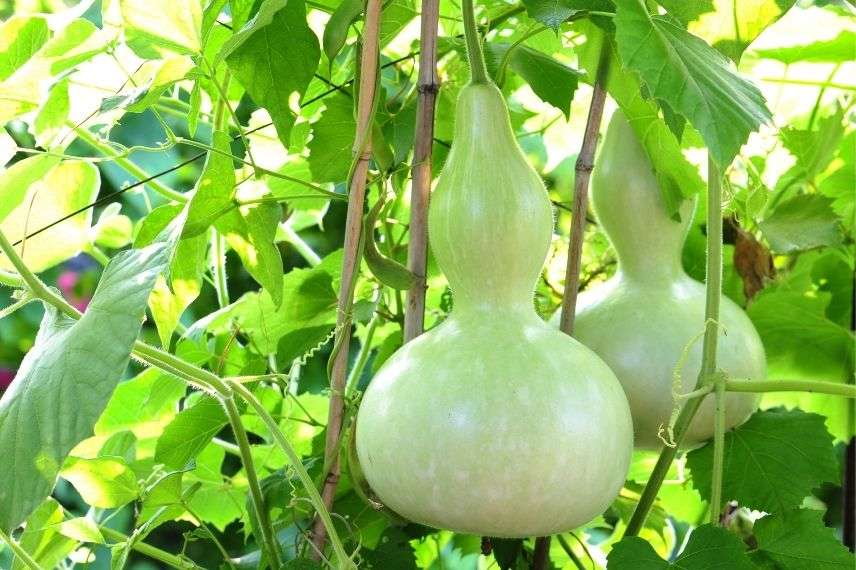
Read also
Sowing of squashes and courgettesHow to empty it depending on its use?
As a decorative object, the gourd has numerous uses depending on its shapes: cut in half, hollowed out, it can serve as kitchen utensils (spoons, salad bowls, bowls…) or as a resonating body for a musical instrument (balafons, berimbau or kora, highly valued in Africa).
While the fruit of the gourd plant can be cut in half for easy emptying, it can also be used without cutting for other purposes. Indeed, it can serve as maracas when filled with sand or gourds. Notably, the ‘Sennari’ variety of gourd, shaped like a small bottle measuring 5 to 15 cm, is particularly suited for transporting sake in Japan.
To maintain its waterproof function, which is essential for a gourd, it must be emptied without cutting. To achieve this, a hole should be dug at the top and the fruit placed in an area favoured by ants. To feed their colony, the ants will carry the contents out of the gourd. Once the task is complete, all that remains is to rinse with clear water and fully dry the fruit. This will take about 6 months to harden and acquire the durability properties of wood.
Good to know: during the drying process, nearly half of the gourds will naturally mould.
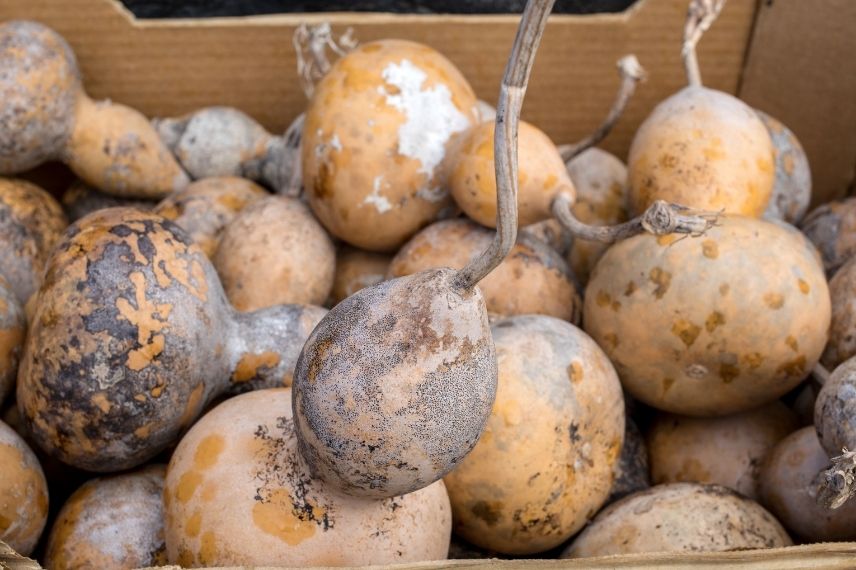
Why and how to clean your mate gourd for the first time?
If you wish to use the gourd as a kitchen instrument – particularly for infusing your mate, there are 3 essential reasons to clean your gourd before its first use:
- Hygiene: carved from a squash, it may retain dried bits that do not give a healthy appearance to the gourd
- Preservation of the original taste: if not properly cured, it affects the taste of the foods it will hold
- Protection of the gourd: simply curing it helps to waterproof it, making it less prone to mould
To clean it properly, just follow these few steps and repeat the process at least 3 times:
- Fill the gourd with used mate or already infused herbs (to avoid waste) up to three-quarters full;
- Pour hot water to the brim, let it sit for an hour so the leaves can absorb before adding a little more water;
- Let it rest for 24 hours;
- Discard the contents of the gourd, scrape the inside with a metal spoon to remove all residues;
- Rinse the gourd and scrub, then repeat this process as many times as necessary to achieve a clean interior;
- Dry the gourd with absorbent paper, then leave it to air dry upright or on its side, to prevent moisture from stagnating inside.
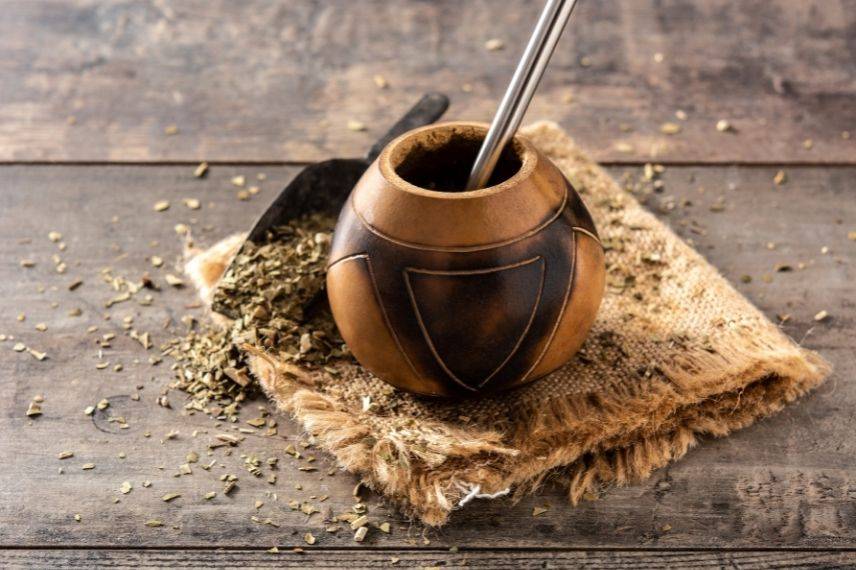
Read also
Squashes: buyer's guideHow to care for your calabash?
Gourds require regular maintenance to ensure a long lifespan and prevent any mould: when properly cleaned and maintained, it can be kept for over 20 years!
First and foremost, you must always (and quickly) ensure that the contents are removed after each use, then rinse it with clear water (without soap!) and dry it thoroughly before storing it in a dry, temperate place. Above all, do not place it near a radiator, as this would cause it to dry too quickly and could lead to cracking.
Good to know: if, over time, the gourd changes colour, this is a normal phenomenon caused by prolonged contact with air, yerba mate, and water. However, if it shows white marks, this indicates mould, and it should no longer be used.
- Subscribe!
- Contents
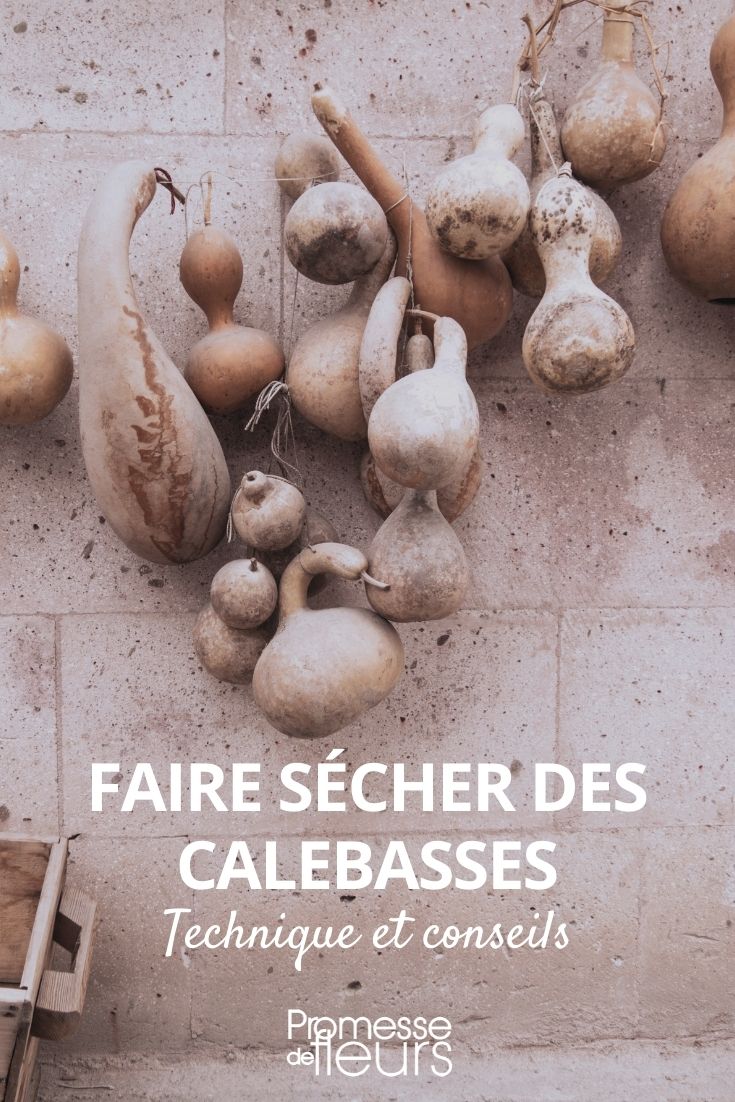































Comments